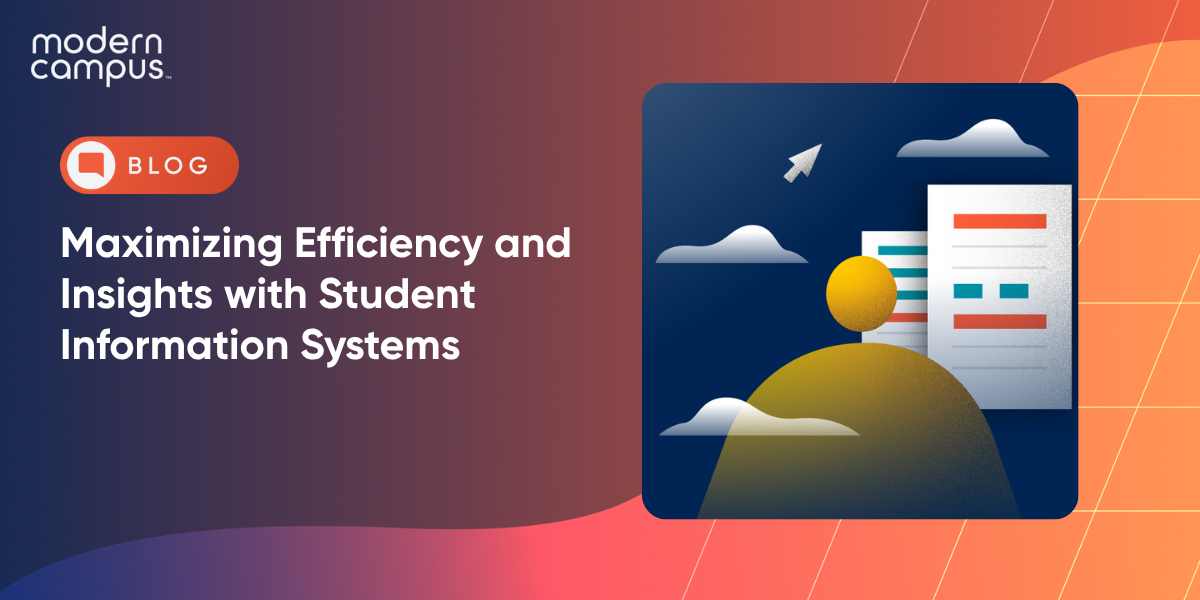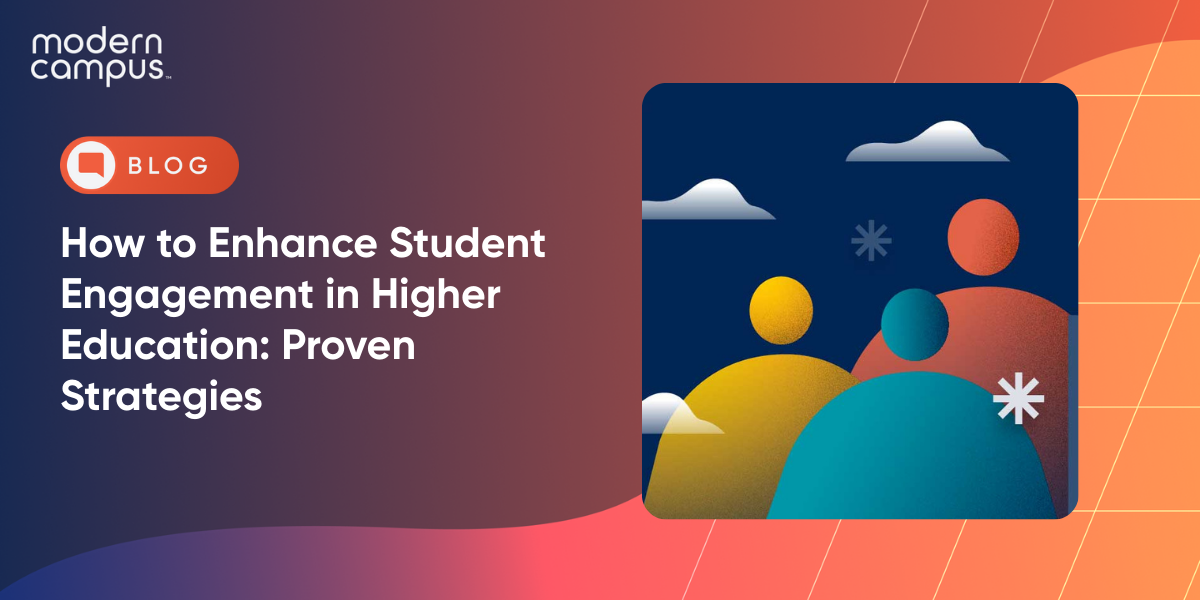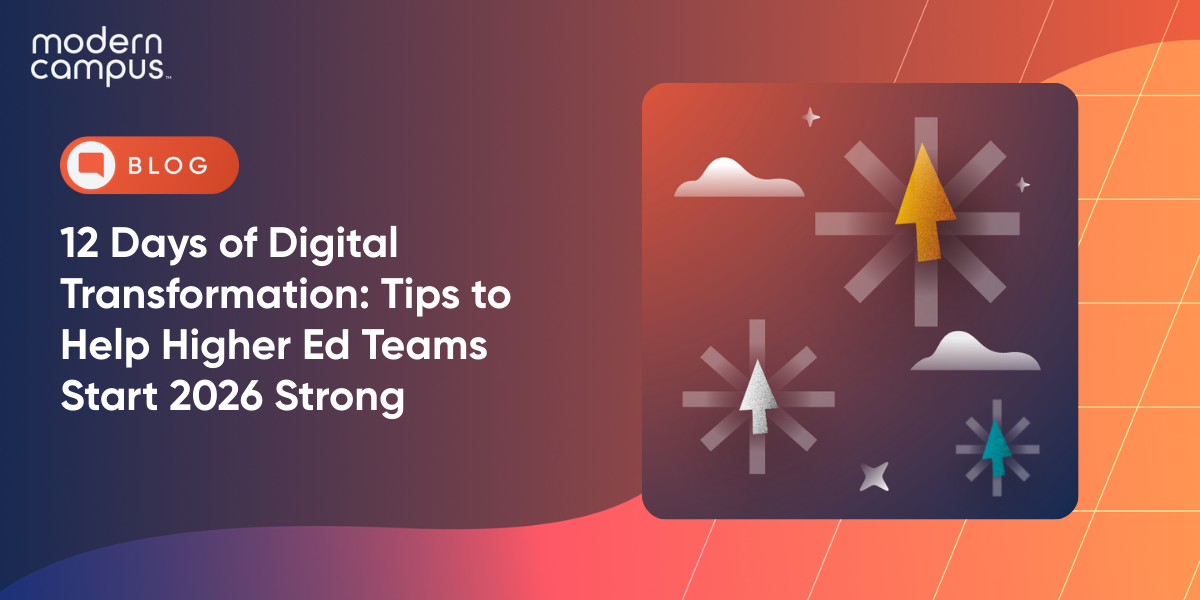Maximizing Efficiency and Insights with Student Information Systems
Institutions face mounting pressure to operate with agility while delivering a meaningful, data-informed student experience. The rise of digital transformation, demographic shifts and new student expectations have placed unprecedented demands on administrators, faculty and staff across the entire campus.
From course registration and financial aid to advising and degree audits, every step of the academic journey depends on efficient systems that support real-time access to student information. The right strategy streamlines campus operations and empowers higher education leaders to make faster, more strategic decisions.
Modern student information systems (SIS) are no longer just back-end tools for storing academic records and processing grades. They're mission-critical platforms that drive student success, inform strategic planning and ensure institutions stay responsive to the needs of both traditional and non-traditional learners.
By centralizing data, automating routine administrative tasks and integrating with other campus technologies, these systems offer deeper insights and deliver tangible benefits across departments.
As the demands on higher education continue to evolve, institutions that prioritize a modern, responsive SIS are better positioned to boost enrollment, improve student retention and elevate the educational experience for all.
Unlocking the Full Potential of Student Information Systems
Modern higher education student information systems have evolved far beyond static databases. When implemented strategically, they become the institution's central nervous system. Streamlined operations, enhanced student support and real-time data drive smarter decisions. Unlocking their full potential means aligning technology with institutional goals and integrating it into every phase of the student lifecycle.
Centralizing Student Data for Campus-Wide Visibility
One of the core advantages of a modern SIS is unifying data across departments, creating a single source of truth. When academic records, attendance, course progress and financial details are accessible through a centralized system, faculty and staff can act on up-to-date insights. With eliminated data silos, administrators can better support students at every touchpoint, from admissions to graduation.

Real-Time Insights to Support Student Success and Retention
An advanced SIS stores and interprets data. Through integrated dashboards and customizable reports, higher education leaders gain immediate access to trends in performance, engagement and risk. These insights help identify at-risk students early, enable timely interventions and ultimately improve student retention by keeping learners on track through every phase of their academic journey.
Streamlining Administrative Processes and Compliance
From enrollment verification to compliance reporting, student information systems automate many of the repetitive administrative tasks that consume institutional bandwidth. Built-in workflow tools help ensure regulatory deadlines are met, documentation is accurate and approvals move swiftly. With improved efficiency for staff, students face fewer delays in accessing services that support their academic goals.
Enhancing the Financial Aid Experience Through Integration
Financial aid is often one of the most complex and critical touchpoints in a student’s academic journey. Delays or confusion around funding can disrupt enrollment, discourage persistence and create barriers to access, especially for first-generation and underserved students. A well-integrated student information system helps simplify the process for both staff and students, turning what’s often a pain point into a seamless experience that supports student success.
Automated Workflows That Save Time and Reduce Errors
Manual financial aid processes are prone to delays and inaccuracies that frustrate students and overwhelm staff. A higher education SIS with automation capabilities streamlines the entire aid lifecycle, from FAFSA data imports to award packaging and disbursement. By reducing the need for manual intervention, institutions improve accuracy, ensure compliance and deliver faster outcomes for students.
Empowering Students with Clear, Actionable Aid Information
When students can easily access their financial aid status, deadlines and award letters in real time, they’re better equipped to plan and persist. SIS platforms that integrate financial aid with student portals promote transparency and self-service, giving students control over their financial path. Having clarity empowers prospective students to make informed enrollment decisions and helps continuing students stay focused on their educational goals.

Supporting Equity and Access Across Diverse Populations
Integrated financial aid tools can also surface valuable data about who is applying for aid, who’s being awarded and where gaps exist. Institutions can design targeted outreach, adjust policies and create programs that support equity across the student body. By connecting financial aid management to larger institutional goals, SIS platforms help ensure no student is left behind due to avoidable administrative or informational barriers.
A Strategic Advantage for Higher Education Institutions
Institutions need systems that actively inform strategic planning and growth. Today’s SIS platforms can align academic offerings with market demand, support innovation and enable administrators to make confident, data-informed decisions that benefit students, faculty and the institution as a whole.
Aligning Academic Planning with Market Demands
As industries evolve and new technologies emerge, institutions must constantly evaluate whether their academic programs reflect the needs of today’s workforce. A modern student information system provides the data infrastructure to support this evaluation, helping academic leaders align curriculum development with real-world trends.
For example, as fields like cybersecurity, data analytics and healthcare technology continue to grow, institutions with integrated labor market insights can identify surging demand and rapidly develop or expand relevant programs.
Consider a mid-sized university noticing a steady increase in demand for remote work and digital skills across regional employers. By analyzing enrollment data alongside external workforce trends within their SIS, administrators can propose new certificate programs in digital project management or expand hybrid learning options for business and IT students.
Adopting this approach attracts more prospective students while ensuring that graduates enter the job market with in-demand skills, enhancing the institution’s reputation and impact within the higher education community.
Leveraging SIS for Smarter Curriculum and Scheduling Decisions
Scheduling conflicts, under-enrolled courses and delayed graduation timelines can often be traced back to a lack of cohesive planning tools. A higher education SIS that supports dynamic course scheduling and degree audits empowers administrators to build schedules based on actual student needs and behavior. This includes analyzing past enrollment patterns, student progress toward degrees and faculty availability to optimize course offerings.
For example, if data reveals that a core class frequently fills up or conflicts with other required courses, administrators can adjust offerings in real time, reducing bottlenecks and improving the path to graduation. These tools also help forecast classroom usage and faculty loads, making academic planning more efficient and aligned with institutional resources.
Using Data to Improve Enrollment, Retention and Outcomes
Student data housed in the SIS offers a powerful lens into how students move through the institution, from initial inquiry to graduation. When analyzed effectively, this data supports more targeted recruitment, personalized advising and timely interventions. It also helps higher ed leaders track key performance indicators and benchmark progress against institutional goals, fueling a cycle of continuous improvement.
For instance, tracking patterns in course withdrawals or financial aid applications can reveal pain points that impact student retention. Institutions can then take action, whether offering additional advising, adjusting registration windows or expanding support services, to ensure students are more likely to persist and succeed.
Transforming Student Services Across the Entire Campus
Student services shape the educational experience, yet many departments still rely on fragmented systems that create inconsistent support. A centralized, modern student information system unites departments across the institution so they can collaborate and serve students with clarity, consistency and care. When student services are connected and data-informed, the entire campus benefits from more coordinated, responsive and effective operations.
Personalized Communication and Support at Scale
Students expect the same level of tailored communication from their institution as they do from consumer brands. A student information system with built-in communication tools allows administrators to segment messages by student type, behavior or academic progress.
For example, engaging students through SMS ensures they receive timely, relevant updates. In turn, automation reduces the burden on staff who would otherwise spend time fielding redundant questions.
Unified Student Records for Better Advising and Engagement
With all academic records, transcripts, financial aid data and advising notes stored in one system, advisors can offer more meaningful guidance. They can see a student’s entire academic history, identify potential obstacles and recommend appropriate next steps without relying on outdated records or multiple systems. A unified approach strengthens advisor-student relationships and supports more successful academic outcomes.
Enabling Holistic Educational Experiences Through SIS Integration
By integrating with other campus platforms, such as learning management systems, co-curricular tools or career services portals, the SIS becomes a hub for a truly holistic student experience. Students can register for courses, access academic support and explore job pathways without navigating a maze of disconnected systems. Streamlined access reflects the expectations of today’s learners and elevates how institutions support students both inside and outside the classroom.
Elevating the Educational Experience with Actionable Insights
A higher education SIS transforms raw information into actionable insights that enhance learning, streamline decision-making and empower both students and staff. From predictive analytics to real-time dashboards, these tools help colleges and universities proactively shape outcomes rather than react to problems after the fact.
Predictive Analytics to Proactively Support At-Risk Students
Predictive models built into student information systems can flag patterns that suggest academic or personal risk, such as declining attendance, repeated course drops or unmet degree requirements. Armed with this knowledge, advisors and faculty can intervene early with personalized outreach, academic support or wellness resources. A proactive approach improves student retention and ensures that no student slips through the cracks.

Real-Time Dashboards to Track Success Metrics and Progress
Customizable dashboards make it easy for administrators, department heads and faculty to monitor key metrics across the institution. Whether tracking graduation rates, course performance, financial aid distribution or hybrid learning engagement, these visual insights help guide decisions on resource allocation, policy changes and instructional design. Because the data is live, institutions can respond with speed and confidence.
Data-Informed Strategies for Long-Term Student Growth
Beyond immediate interventions, long-term planning benefits greatly from consistent, comprehensive data. A student information system can help identify trends in student achievement, career outcomes and course demand across years or even decades. With this information, higher education leaders can adapt academic offerings, invest in the right technologies and evolve support services to meet the future needs of their learners and communities.
Take the Lead in Campus Efficiency and Student Success
SIS platforms have become essential for higher education institutions aiming to thrive. By centralizing academic records, automating administrative tasks and surfacing real-time insights, a modern SIS empowers institutions to support student success at every stage. When used to its full potential, this technology transforms the educational experience across the entire campus.
At Modern Campus, we help colleges and universities like yours harness the full power of student information systems to streamline operations, personalize student services and unlock deeper insights that fuel strategic growth. Our solutions are built exclusively for higher education, and we’re passionate about supporting the entire learner-to-earner lifecycle. Request a demo today and see how we can partner with you to drive smarter, more connected outcomes.
Last updated: April 14, 2025



